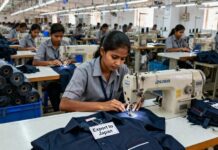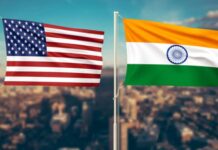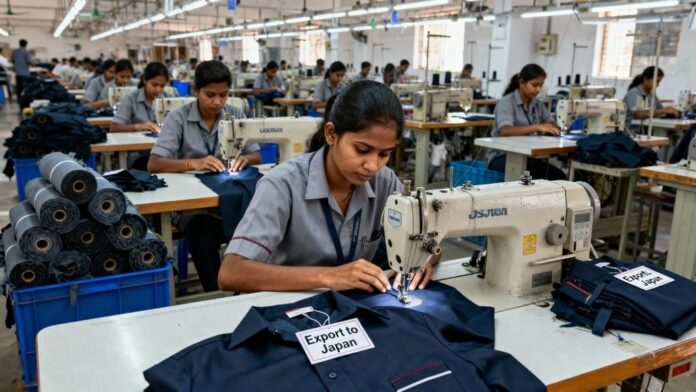The Japanese apparel market is recognized as one of the largest and most sophisticated worldwide, renowned for its strong emphasis on innovation, distinctive design, and uncompromising quality standards. With forecasts predicting continued growth in the sector, this market represents a significant opportunity for apparel-exporting countries. Bangladesh, one of the world’s foremost garment producers, is increasingly looking to solidify its presence in this profitable market.
Bangladeshi apparel manufacturers are strategically directing their attention toward Japan at an opportune moment. Negotiations for a Bangladesh–Japan Economic Partnership Agreement (EPA) are currently in progress and are expected to conclude by the end of 2025. This agreement aims to deepen trade and investment links between both nations by creating a framework that reduces tariffs, streamlines trade processes, and enhances market access for Bangladeshi products.
For Bangladesh, which relies heavily on ready-made garments, the EPA offers a vital chance to broaden its export base and diversify beyond traditional markets in the United States and the European Union.
Industry experts believe that the outlook for Bangladesh’s apparel exports to Japan has never been more promising, especially with the upcoming EPA, the growing Japanese interest in the ‘China Plus One’ sourcing strategy, and Bangladesh’s commitment to enhancing quality and sustainability.
Although China remains Japan’s leading supplier of apparel, its dominance is gradually weakening. Current estimates suggest that China’s share of Japan’s apparel imports has declined from over 55% in 2022 to about 46.88% in early 2025.
Interestingly, this decline in China’s market share is not matched by a reduction in Japan’s overall apparel imports, indicating that Japanese retailers are not reducing demand but instead diversifying their sourcing strategies.
The increasing trend towards the ‘China Plus One’ strategy, which encourages Japanese companies to seek alternatives to Chinese sourcing, has positioned Bangladesh as a viable competitor. This is further reflected in the consistent growth of Bangladesh’s apparel exports to Japan, highlighting the shifts in Japanese sourcing dynamics and Bangladesh’s growing competitiveness.
According to recent estimates, Bangladesh’s apparel exports to Japan rose from $944.82 million in the fiscal year 2020-21 to around $1.41 billion by 2024-25. This upward trend underscores a solid foundation for future expansion, particularly as Bangladeshi manufacturers invest in quality improvements and value-added production to adhere to Japanese standards.
The Japanese fashion market is often described as one of the most challenging globally, with consumers prioritizing craftsmanship, attention to detail, and durability over low-cost, mass-produced items. This presents both a challenge and an opportunity for Bangladeshi exporters. “Japan’s fashion market is unique in the sense that gaining Japanese buyers’ trust is not that easy,” said one apparel manufacturer, adding, “The market is driven by a sophisticated consumer base that values craftsmanship, and the emphasis on quality is extremely high. Long-term communication and consistent efforts are essential to building trust and successfully entering the Japanese market.”
To meet these expectations, many Bangladeshi garment factories are focused on compliance, upgrading technology, and prioritizing sustainability—factors that align well with Japan’s growing preference for ethical and environmentally responsible production practices.
Japanese buyers, known for cultivating long-term partnerships once trust is established, often place great importance on reliability and transparency throughout the supply chain. Recognizing this, Bangladeshi businesses are working diligently to enhance their reputation through improved standards, timely deliveries, and investments in eco-friendly production methods.
Experts assert that the combination of Japan’s efforts to diversify its sourcing, the forthcoming Economic Partnership Agreement, and Bangladesh’s improving manufacturing capabilities will create new growth opportunities for Bangladesh’s apparel exports to Japan in this lucrative market.
While challenges in meeting Japan’s stringent quality requirements and cultural expectations remain, the potential rewards are substantial. By proving their reliability, consistency, and dedication to sustainability, Bangladesh can establish itself as a crucial partner in Japan’s apparel supply chain, leaving room for optimism about future prospects.


































